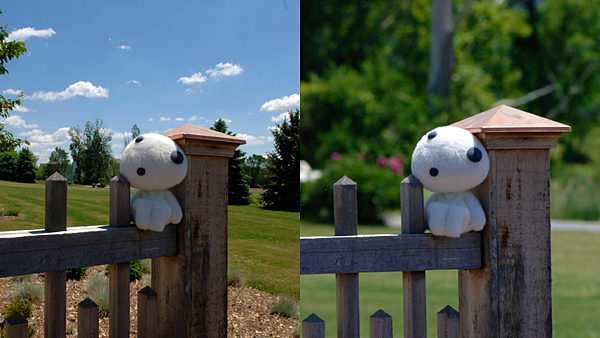Why Does the Moon Look Large on the Horizon, But This Doesn't Show Up in Photographs?
The answer to this question is still debated by scientists. It is known as the Moon Illusion. The moon is always almost exactly the same size when visible in the sky. Vision scientists like to measure size using angles and the angle subtended by the moon is about 0.5 degree. (Coincidentally, the angle of the sun is also almost exactly 0.5 degree at the Earth's surface. That's why both lunar and solar eclipses can happen the way they do!). When the moon is on the horizon, it is 0.5-degree wide (and high) and when it is straight up overhead, it is 0.5-deg. wide (and high). A camera simply records that physical geometry of the moon and the pictures make the moon look the same size (which it is) regardless of whether it is on the horizon or overhead.
Since there is no problem with the photographs, then the "error" must be in our perception of the moon. Indeed that is the case. That moon looks larger on the horizon to us even thought it really isn't and that is precisely the definition of the Moon Illusion. There are many theories about why the moon illusion occurs. My favorite has to do with perceived distance and another visual phenomenon called size constancy. Size constancy refers to the perception that the sizes of objects appear the same whether they are nearby or far away. For example, if you are right next to me, you will see me as a human about 6-feet (or 2-meters) tall. If you see me from 100-yards (or 100-meters) away across a football field, I will still look like a human that is about 6-feet (or 2-meters) tall even though I would only take up a very small portion of what you can see. In other words, even though the image of me on your retina decreases in size when I am farther away, your perceptual system takes into account your perception of how far away I am and I appear to remain the same size (size constancy).
This could create the moon illusion because people seem to perceive the "distance to the imaginary surface of the sky" where the moon is to be much larger at the horizon than overhead. Thus if the moon is always the same size on our retinas (it is), then our perception of the moon will be that it is larger at the horizon because we mistakenly perceive it to be farther away (it isn't). There are other possible explanations for the Moon Illusion, so you should do some more reading on those.
If you still don't believe me then check for yourself. Next time you see the moon, hold your thumb out at arm's length and compare the size of the moon to your thumbnail. The moon will be about half as wide as your thumbnail (yes, it really will!). Now repeat this experiment when you see the moon at different heights in the sky with different apparent sizes and you will notice that it is always about half the width of your thumbnail.
![]()
Explore the NEXT TOPIC at this level.
Explore the NEXT LEVEL on this topic.
Ever wonder ... Why is the sky blue?
Updated: Apr. 19, 2011

